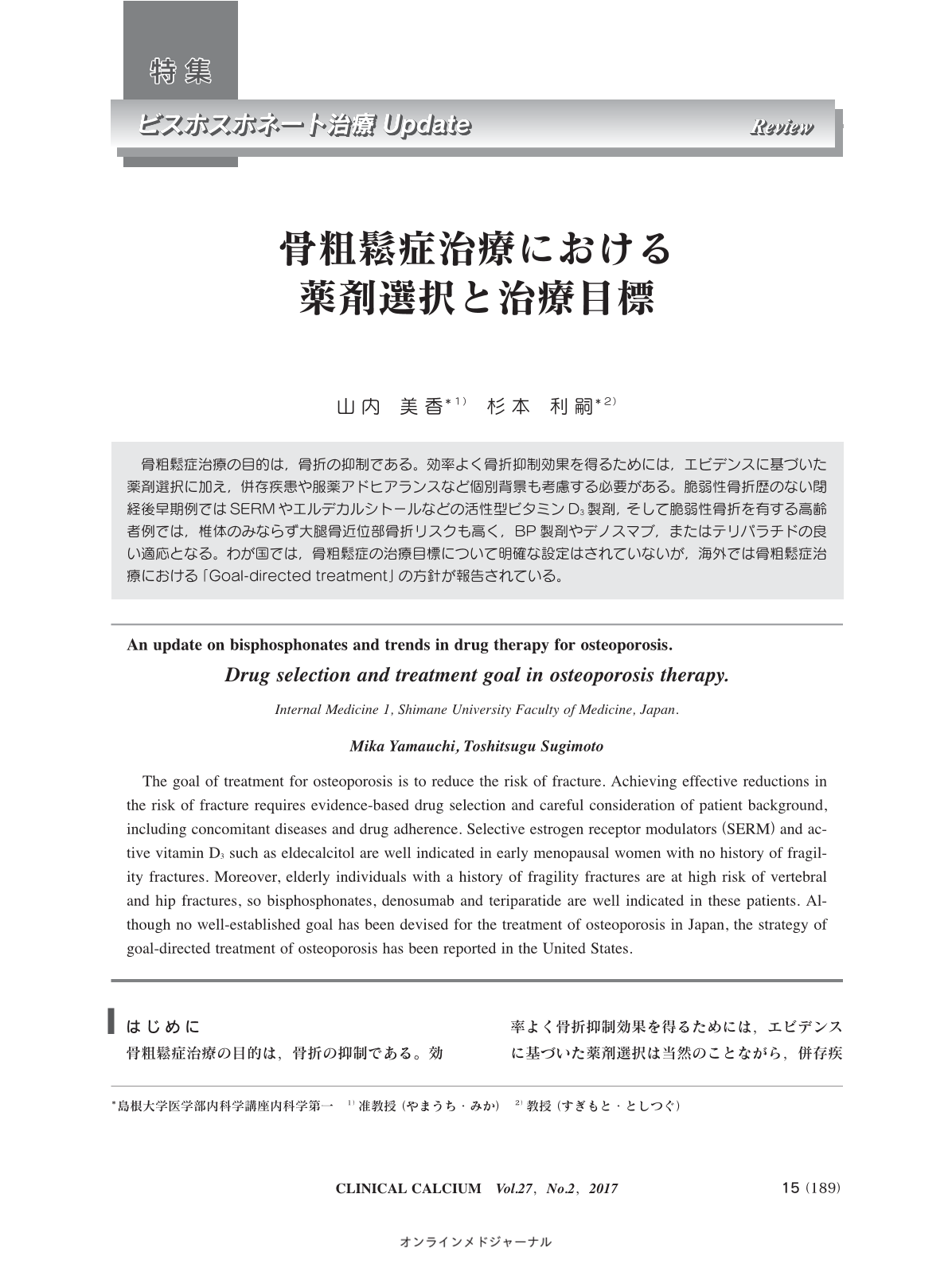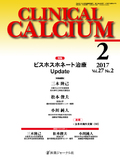Japanese
English
- 有料閲覧
- Abstract 文献概要
- 1ページ目 Look Inside
- 参考文献 Reference
骨粗鬆症治療の目的は,骨折の抑制である。効率よく骨折抑制効果を得るためには,エビデンスに基づいた薬剤選択に加え,併存疾患や服薬アドヒアランスなど個別背景も考慮する必要がある。脆弱性骨折歴のない閉経後早期例ではSERMやエルデカルシトールなどの活性型ビタミンD3製剤,そして脆弱性骨折を有する高齢者例では,椎体のみならず大腿骨近位部骨折リスクも高く,BP製剤やデノスマブ,またはテリパラチドの良い適応となる。わが国では,骨粗鬆症の治療目標について明確な設定はされていないが,海外では骨粗鬆症治療における「Goal-directed treatment」の方針が報告されている。
The goal of treatment for osteoporosis is to reduce the risk of fracture. Achieving effective reductions in the risk of fracture requires evidence-based drug selection and careful consideration of patient background, including concomitant diseases and drug adherence. Selective estrogen receptor modulators(SERM)and active vitamin D3 such as eldecalcitol are well indicated in early menopausal women with no history of fragility fractures. Moreover, elderly individuals with a history of fragility fractures are at high risk of vertebral and hip fractures, so bisphosphonates, denosumab and teriparatide are well indicated in these patients. Although no well-established goal has been devised for the treatment of osteoporosis in Japan, the strategy of goal-directed treatment of osteoporosis has been reported in the United States.



